How did a child who was raised poor, barely educated and scorned as illegitimate become one of the most famous women in modern history?
Some of the answers might be found inside a seemingly insignificant single-story brick house in Los Toldos, an agricultural town in Buenos Aires Province about 180 miles (300 kilometres) from the capital. This is where Eva Perón was born on May 7, 1919, although she long tried to hide her origins from the world.
The home of "Evita" has been restored and turned into an interactive museum to mark the 100th anniversary of the birth of the iconic first lady who was adored by many as a champion of the poor and who helped women in Argentina obtain the right to vote.
Evita's persona has transcended time and borders. Andrew Lloyd Webber's musical Evita was a hit in the 1970s. Then came Alan Parker's film starring Madonna based on the musical. It was followed by a display of Evita's dresses at New York's Metropolitan Museum of Art as part of a Christian Dior exhibit.
But her childhood was far from a fairy tale.
Rise and recognition
Evita's father, Juan Duarte, came from a well-off family and had moved to Los Toldos to manage a ranch where her mother, Juana Ibarguren, worked as a servant. Since he was married and had children with another woman, Evita was registered under her mother's last name on her birth certificate.
Evita arrived in Buenos Aires as a teenager in the 1930s and worked as an actress. At a festival to raise funds for the victims of a brutal 1944 earthquake, she met Juan Perón, the Army general who later served two stretches as president and founded a movement that remains a potent force in the country today.
Just before becoming Perón's second wife in 1945, her birth certificate was altered to change her birth date and birthplace — an act that caused confusion for years about her origins.
The only real proof that she was born in Los Toldos is on display at the new museum: a document that shows that she was baptised at the local Del Pilar parish.
"The fact that the father had two families and all that implies ... had a lot to do with it," said Los Toldos Mayor Franco Flexas. "A small town can be hell. Everyone knows everyone else. There's no doubt that she was given hostile looks, and that marked her for life."
In this small town named for a cluster of "toldos" or rustic indigenous homes, Evita has become a legend. A large image of the combative first lady welcomes visitors along the town's main road, shared by cars, bikes and stray dogs. Downtown, a statue of the charismatic woman with her arms spread wide pays tribute to one of her popular speeches as the co-leader of Peronism.
"She's from here. They just cut out the page [of birth records] and transferred her to Junín," said Armando Montalli, a 73-year-old retiree, referring to the city where she was registered on her modified birth certificate. Montalli, who sells Evita memorabilia and other handcrafts at the town's square, said he hopes the new museum will clear any doubts about the origin of "the standard-bearer of the poor."
Home to museum
The Peronist party acquired Evita's childhood home in the 1980s from a local family and turned it into a sanctuary of sorts for sympathisers. The home was declared a national historical monument in 2002, and five years ago it temporarily closed for renovations to turn it into a modern museum.
The objects on display include the sewing machine that Evita's seamstress mother used to support her children after Duarte died in a car accident in 1926. His wake left a lasting memory on the future first lady. It was then that she found out that her father had another family.
Evita grew up hearing the sound of her mother's sewing machine's needle punching through the fabric. When she became first lady, she created the Eva Perón Foundation and gave away thousands of sewing machines to women.
The walls of the home are decorated with previously unreleased photos of a young Evita that were taken by a local photographer. In a 1921 photo, she is dressed like a bee. In another, five years later, she poses next to her sister Erminda, both dressed as sailors.
Memories
Walking slowly with the aid of a cane, Elena Valenti looks at the photos that capture memories of her cousin.
"Eva deserved this recognition, even when she was so humiliated when she was alive," said the 89-year-old Valenti, who lives in Los Toldos.
"I don't know if she suffered during her childhood, but it was sad.... Only a chosen one can do what she did."
A transcript of a text by Evita's sister Erminda is also on display. It says that Evita asked the biblical three wise men for a life-sized doll. When she woke up on January 6, she found a doll, but it was missing a leg.
"Our mum told her that the doll had fallen off a camel," the sister wrote. "What she didn't tell her is that she bought the doll almost for nothing because it was broken. But she did tell her that the [wise men] had brought her the doll so she could take care of it."
Evita's meeting with Perón would transform her life and the lives of millions of Argentines.
Many now credit her activism and passion for things that are central to local culture today — from widespread desires for social justice and equal rights to a shared assumption that society's poorest deserve the government's help.
"I knew it suddenly and by suffering," Evita, who died in 1952 from cancer at age 33, wrote in her autobiography. "I couldn't accept social injustice."
by By DEBORA REY, Associated Press











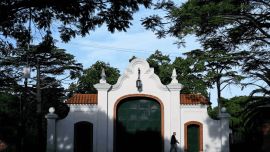
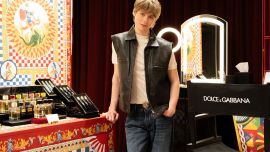







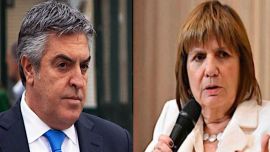

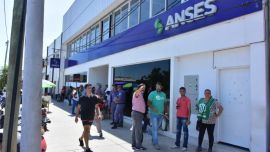

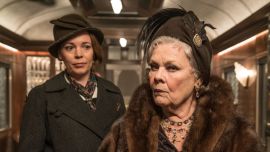
Comments